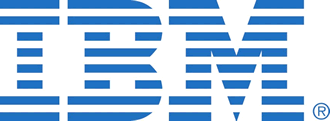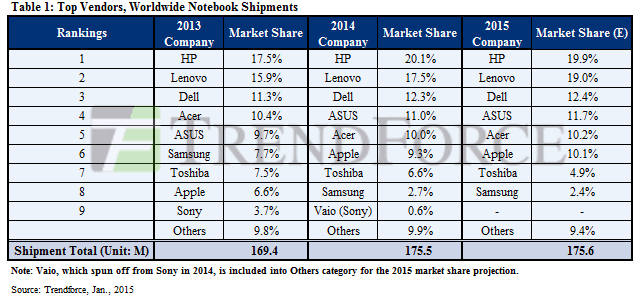Category: News
DLink routers vulnerable to Bulgarian exploit
 A Bulgarian ethical hacker has found a hole in the firmware of DLink routers which make them vulnerable to remote changing of DNS settings and, effectively, traffic hijacking.
A Bulgarian ethical hacker has found a hole in the firmware of DLink routers which make them vulnerable to remote changing of DNS settings and, effectively, traffic hijacking.
Todor Donev, a member of the Ethical Hacker research team, says that the vulnerability is found in the ZynOS firmware of the device, D-Link’s DSL-2740R ADSL modem/wireless router.
The firmware is used in gear made by D-Link, TP-Link Technologies and ZTE.
The flaw allows attackers to access the device’s Web administration interface without authentication, and through it to modify the DNS settings, which could allow them to redirect users to malware-laden and phishing sites and prevent them to visit legitimate sites for OS and software updates (including security software).
Donev released exploit code for the flaw in a security advisory and said that it could be exploited remotely if the device’s interface is exposed to the Internet.
It is not the first time that the firmware has been found a little holey. In March 2014, Internet security research organization Team Cymru uncovered a global attack campaign that compromised over 300,000 home routers and changed their DNS settings. A different vulnerability in ZynOS was exploited in that attack and one of the techniques used was likely CSRF.
Microsoft fires up Android kicker
 Software supremo Microsoft is investing in a start-up that wants to give Google Android a good kicking.
Software supremo Microsoft is investing in a start-up that wants to give Google Android a good kicking.
Microsoft has written a cheque to power up Cyanogen, which is building a version of the Android mobile operating system outside of Google’s auspices.
Apparently Microsoft is a minority investor in a roughly $70 million round of equity financing and the financing round could grow with other strategic investors that have expressed interest.
All of them are keen that to help Cyanogen to diminish Google’s iron grip over Android.
Microsoft offers its own Windows Phone mobile operating system which should be doing its own thing to kill off Android. But Windows Phone has only about 3 per cent market share, which may be prompting Microsoft to consider unconventional steps.
Google has frustrated manufacturers in recent years by requiring them to feature Google apps and set Google search as the default for users, in exchange for access to the search engine, YouTube, or the millions of apps in its Play Store.
For Microsoft, that means less exposure for its Bing search engine, which is up against Google search. It also could limit growth of other Microsoft software products.
Cyanogen has a volunteer army of 9,000 software developers working on its own version of Android.
Kirt McMaster, Cyanogen’s chief said his company’s goal is to take Android away from Google.
It had raised $100 million to date. Previously the company had disclosed that it raised $30 million of funding.
Cyanogen recently signed a deal with Indian smartphone maker Micromax to ship handsets with Cyanogen’s software and is close to announcing more such deals, say people familiar with the matter.
Google sunk by the US dollar and Facebook
 The cocaine nose jobs of Wall Street clutched the spaces where their hearts should be after the search engine Google announced that its revenue growth had been stalled by the strong US dollar.
The cocaine nose jobs of Wall Street clutched the spaces where their hearts should be after the search engine Google announced that its revenue growth had been stalled by the strong US dollar.
Google’s revenue grew 15 percent in the fourth quarter but fell short of Wall Street’s target thanks to declining online ad prices and unfavorable foreign exchange rates.
The outfit appears to be losing ground to Facebook on the advertising front. Facebook reported on Wednesday that mobile ads on its network doubled year-over-year during the fourth quarter.
Google said the “cost per click,” decreased 3 percent year-over-year in the fourth quarter, while the number of consumer clicks on its ads increased 14 percent.
Analysts had expected gains in cost-per-click and they are now saying that Google’s business is slowing and it is going to look worse as the dollar strengthens.
Consolidated revenue in the three months ended Dec. 31 totalled $18.10 billion, compared to $15.71 billion in the year-ago period. Wall Street expected revenue of $18.46 billon.
Chief Financial Officer Patrick Pichette said in a statement that revenue grew “despite strong currency headwinds”.
Net income rose to $4.76 billion from $3.38 billion a year earlier.
US redefines broadband
 The US FCC has redefined the minimum spec required to define a service as broadband.
The US FCC has redefined the minimum spec required to define a service as broadband.
As part of its 2015 Broadband Progress Report, the raised the minimum download speeds needed from 4Mbps to 25Mbps, and the minimum upload speed from 1Mbps to 3Mbps.
At the stroke of a pen it triples the number of US households without broadband access and means there should be some jolly cross people miffed that they bought something they thought was broadband but isn’t.
Currently, 6.3 percent of US households do not have access to broadband under the previous 4Mpbs/1Mbps threshold, while another 13.1 percent do not have access to broadband under the new 25Mbps downstream threshold.
FCC Commissioner Tom Wheeler was vehement in his support for the new broadband standard. “When 80 percent of Americans can access 25-3, that’s a standard. We have a problem that 20 percent cannot. We have a responsibility to that 20 percent.”
FCC Commissioner Mignon Clyburn said: “We are never satisfied with the status quo. We want better. We continue to push the limit, and that is notable when it comes to technology… as consumers adopt and demand more from their platforms and devices, the need for broadband will increase, requiring robust networks to be in place in order to keep up. What is crystal clear to me is that the broadband speeds of yesteryear are woefully inadequate today and beyond.”
However there is a push to make the minimum broadband standards far past the new 25Mbps download threshold, up to 100Mbps.
FCC Commissioner Jessica Rosenworcel thinks the new threshold should be 100Mbps.
However, that would anger the telcos and cable providers who currently call the shots on internet connections in the US. Many of them would prefer to see dial up defined as broadband. As it is changing the national broadband standards to 25Mbps down and 3Mbps up is a bold move for the FCC.
Companies like AT&T and Verizon, which employ DSL services to a notable number of their users and AT&T’s fastest DSL offerings only reach 6Mbps down, while Verizon’s DSL speeds top out at 15Mbps.
In a letter sent to the FCC last week, the National Cable & Telecommunications Association (NCTA) made known its objections to any changes to current broadband standards, stating that examples used by supporters of raising the broadband standards “dramatically exaggerate the amount of bandwidth needed by the typical broadband user.”
The NCTA told the FCC that 25Mbps down isn’t needed for 4K streaming and that users aren’t even interested in higher quality content yet and they will take what ever the suppliers will give them or else they will have to move somewhere else.
The US is currently ranked 25th in the world in broadband speeds, thanks mostly to the fact that the telcos have nearly monopolistic power in the US and politicians in their backpocket.
Smartphone shipments boom
 Over 375.2 million smartphones shipped during the fourth quarter of 2014 – that’s up by 28.2 percent compared to the same period the year before.
Over 375.2 million smartphones shipped during the fourth quarter of 2014 – that’s up by 28.2 percent compared to the same period the year before.
Cloud becomes less nebulous
 A survey of 125 UK based IT managers and chief information officers (CIOs) has revealed that cloud apps are more widely used than often thought.
A survey of 125 UK based IT managers and chief information officers (CIOs) has revealed that cloud apps are more widely used than often thought.
Intel hears Bell and changes its approach
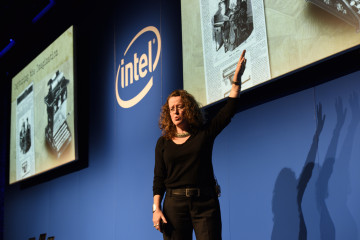 For years Intel has been an engineer’s company, pushed the technology of its chips, and followed a religion based on shrinking and tick following tock. However, it seems that its mindset is changing – and it appears to be something to do with the influence of its vice president anthropologist Genevieve Bell.
For years Intel has been an engineer’s company, pushed the technology of its chips, and followed a religion based on shrinking and tick following tock. However, it seems that its mindset is changing – and it appears to be something to do with the influence of its vice president anthropologist Genevieve Bell.
Yesterday Intel held a product announcement for its 5th Gen Intel Core vPro Processor. In the bad old days we would have been given a spec sheet of all the product’s wholesome goodness and be told how great it was. We would have popped back to the office with a picture of a chip and wrote it up something like “Intel wants a world without wires”.
But the actual technology almost took a back seat – instead there was Bell.
Bell told us about how the workplace was changing along similar lines to the Industrial revolution. The needs of the Industrial revolution created a demand for documentation and lead to the evolution of the typewriter. The typewriter transformed the office and lead to a more diverse workplace, with more women entering for the first time.
Bell argued that technology is doing the same thing now and the workplace is changing and becoming more diverse as older people now work longer and with more ethnic diversity. This change is as a result of evolving technology and a move to more creative and collaborative business practices.
So what does this have to do with the 5th Gen Intel Core vPro Processor? Answering that question suddenly laid bare Intel’s cunning plan and explains Chipzilla’s actions of the last few years. The concept of Intel actually having a cunning plan is surprising, after Intel appeared to miss the so-called mobile revolution, we thought its direction was similar to that of a headless chicken, but Bell seems to be encouraging a different role, which it if pulls off could see Intel at the centre of significant workplace change. Intel is thinking less about the technology, and more about how that technology is going to change the workplace. It is creating small technology combos which could make for bigger changes – not, as it has done in the past in technology, but in the workplace.
Tomasz Klekwski, Intel’s EMEA business market manager said that the technology itself was not enough to bring about the sorts of transformations which Intel wants to take place. In other words, it is not just the chip – it is how the chip fits into the organisation and what transformations the organisation has a result.
5th Gen Intel Core vPro Processor, for example, has wireless features which enable companies to dump a huge amount of fiddly networking cabling. It creates technology which can wirelessly and automatically connect to video screens in meeting rooms and charge and connect laptops but also build hot deskwork environments.
All this is a mobile future but it is far different from the consumer based technology being pushed by Apple and its new chum IBM which emphasises tablets, BYOD and simply packages consumer tech for businesses.
It is a vision which has an Intel notebook at its centre – admittedly one that might turn into a laptop, is super-thin and with a long battery life, but Chipzilla’s traditional money-spinner nevertheless. But listening to Bell and Tom Garrison, Vice President, PC Client Group sell the idea in its historic context it starts to make sense.
As Garrison pointed out – consumer ideas do not work well in the business, and the money is rarely in consumer devices but more in engineering business changes.
The concept that this is all marketing bollocks is not far from the mind of any sceptical journalist, but if you accept the historical approach to the rise of technology touted by Bell you had to admit, Intel is onto something better than simply repackaging consumer fads.
If she is right, then it did not matter too much that Intel missed the mobile computing trend. Sure, it was big enough and should have had a chip in place, but mobile phones and tablets, even the Internet of things are going to be the side-salad in any serious business evolution. It will be small things that make a difference and if you know what the business is evolving into you can make the products it needs.
Intel will have a hard time selling this vision – both to IT journalists and its own staff. The first thing we noticed yesterday was that Intel suits dominated the poorly dressed media – in fact we had the impression that the meeting was more being held for them. Secondly many hacks walked away from the event to write headlines like “Intel wants a world without wires”. Or to sing the praises of the 5th Gen Intel Core vPro.
But as the meeting pointed out, much of the technology of the 5th Gen Intel Core vPro has been around for a decade and slowly evolving. What Intel is noticing is that people are finally starting to switch on and use its functionality. This suggests that companies are getting what IT hacks and technology companies haven’t – it is not about the technology stupid it is how it creates a change. If Intel is the only one to gets that, it will be the only one which makes a lot of money as the workplace changes.
Dell leads commercial monitor market
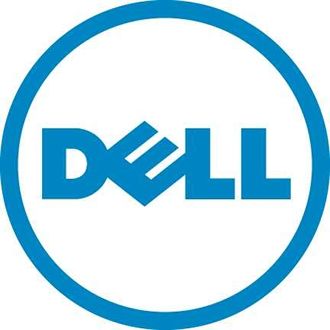 While there were shortages of monitor panels last year that caused only 133.6 million units to ship, some vendors have done better than expected.
While there were shortages of monitor panels last year that caused only 133.6 million units to ship, some vendors have done better than expected.
Microsoft in big Office give away
 Software giant Microsoft has decided that people who use Android tablets will be able to download Office applications for nothing from today.
Software giant Microsoft has decided that people who use Android tablets will be able to download Office applications for nothing from today.
Intel pins its hopes on enterprise market
 Faced with stiff competition at the mobile end of the market, it appears that Intel is hoping sales of expensive machines to enterprises will set the company back on track.
Faced with stiff competition at the mobile end of the market, it appears that Intel is hoping sales of expensive machines to enterprises will set the company back on track.
Samsung shows profit drop
People keep taking the tablets
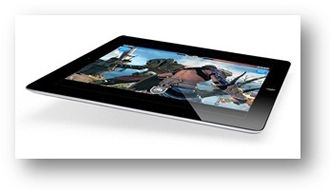 Despite reports suggesting that the market for tablets is in decay, fresh data shows that it ain’t necessarily so.
Despite reports suggesting that the market for tablets is in decay, fresh data shows that it ain’t necessarily so.
School failure linked to computer use
 An extensive study by the University Autonomy de Barcelona (UAB) sampled 5,538 secondary school students to gauge the effect of technology in their lives.
An extensive study by the University Autonomy de Barcelona (UAB) sampled 5,538 secondary school students to gauge the effect of technology in their lives.
HP won PC battle in 2014
 Things went better for the notebook industry last year, according to a report from Taiwanese research house Trendforce.
Things went better for the notebook industry last year, according to a report from Taiwanese research house Trendforce.
